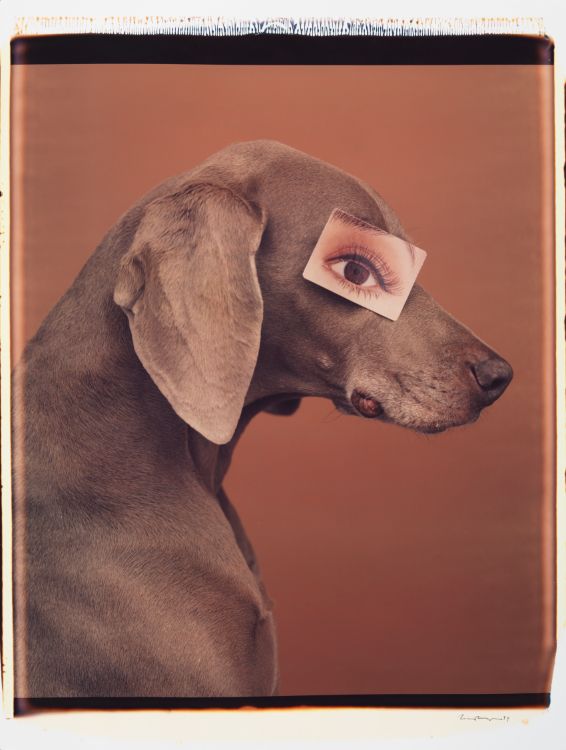After being approached by the Polaroid Corporation in 1978, William Wegman transformed his performance and video based artistic practice into something far more tangible, the instant photograph. Using the then newly developed 20×24 inch Polaroid camera, Wegman began producing vibrant, large-format photographs of his pet Weimaraners. Over the course of 28 years, the artist and his prized canine collaborators produced a series of uncanny, minimalistic images defined by a carefree whimsy. Inspired by Surrealism, Cubism, and colour theory, Wegman’s Polaroids expertly question the boundaries between façade and identity. His Weimaraners are anthropomorphised, often pictured wearing human clothes or lounging on furniture. The images are simply composed, shrouded in a single block colour with one or two sleek, velvety Weimaraners poised centrally.
Eyewear II (1994) is no exception. Wegman captures his Weimaraner in profile, the image frame cutting off just below the dog’s muscular torso. By depicting his Weimaraner as statuesque and proud in profile view, he situates his photograph within a wider tradition of royal portraits, for example Piero della Francesca’s diptych of the Duke and Duchess of Urbino, painted in Renaissance Italy. The portraits of the two figures were originally painted in profile on two hinged panels, the function of which would have mimicked the movements of a book. As such, the striking profiles of the Duke and Duchess face each other in everlasting conversation; one light as porcelain, the other shrouded in a blood red cloak and hat. The solitary Weimaraner in Wegman’s image, however, is missing a companion. Perhaps in this instance, it is the viewer’s choice to fill the role and connect with the lone dog.
Within his Polaroids, Wegman views his Weimaraners as blank slates, blending and altering their malleable identities. He encourages the viewer to question what his dogs have become, explaining they ‘are always in a state of becoming something. They become characters, objects, when they are lying down they become landscapes’. Thus, the dog in Eyewear II, with a human eye pasted over its own, becomes a creature split in half. The Weimaraner is, of course, still recognisable as a dog. However, with the most distinctive human feature adhered to its face, it adopts an additional layer of humanity
(By Eleanor Lerman)
